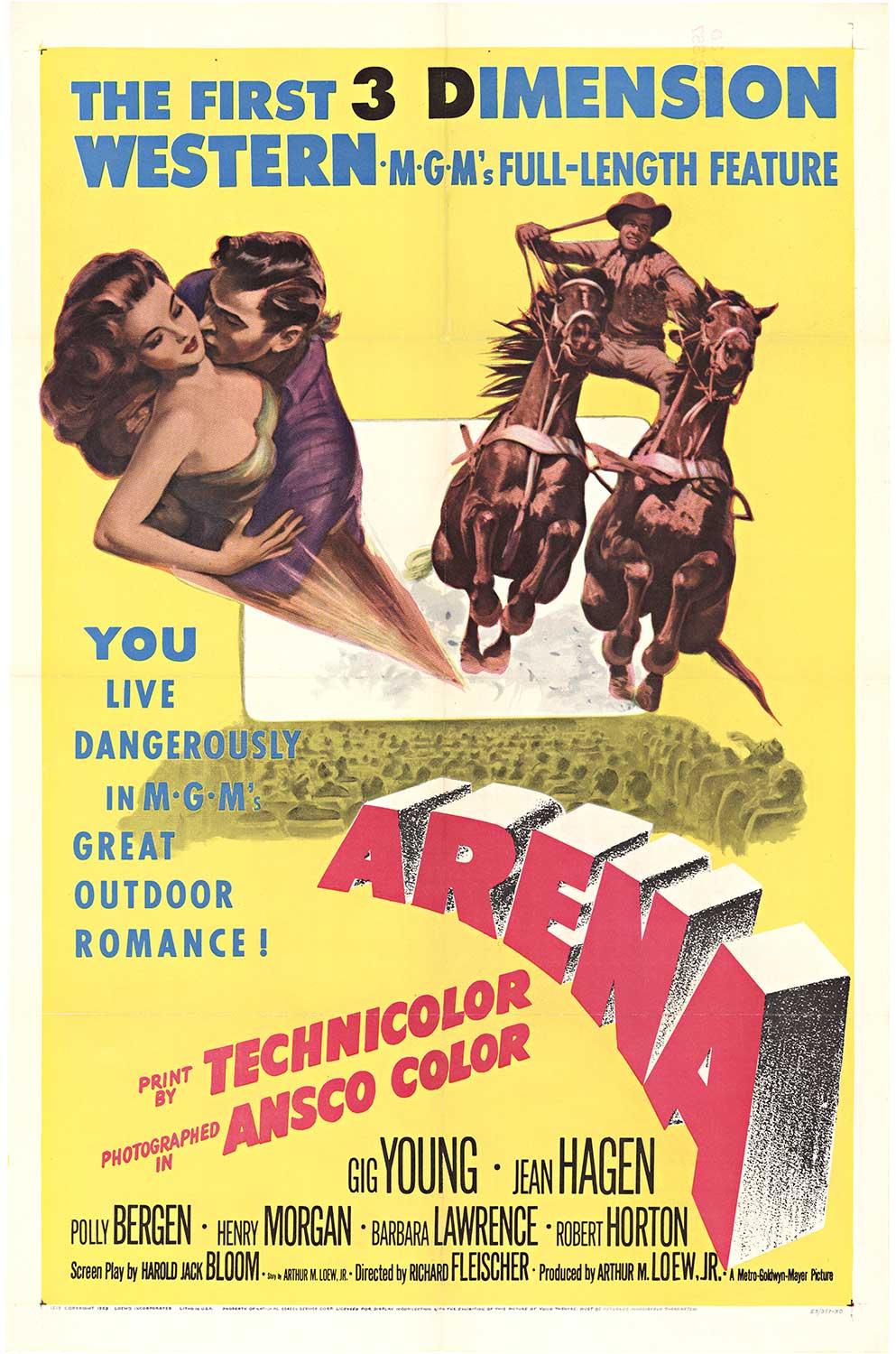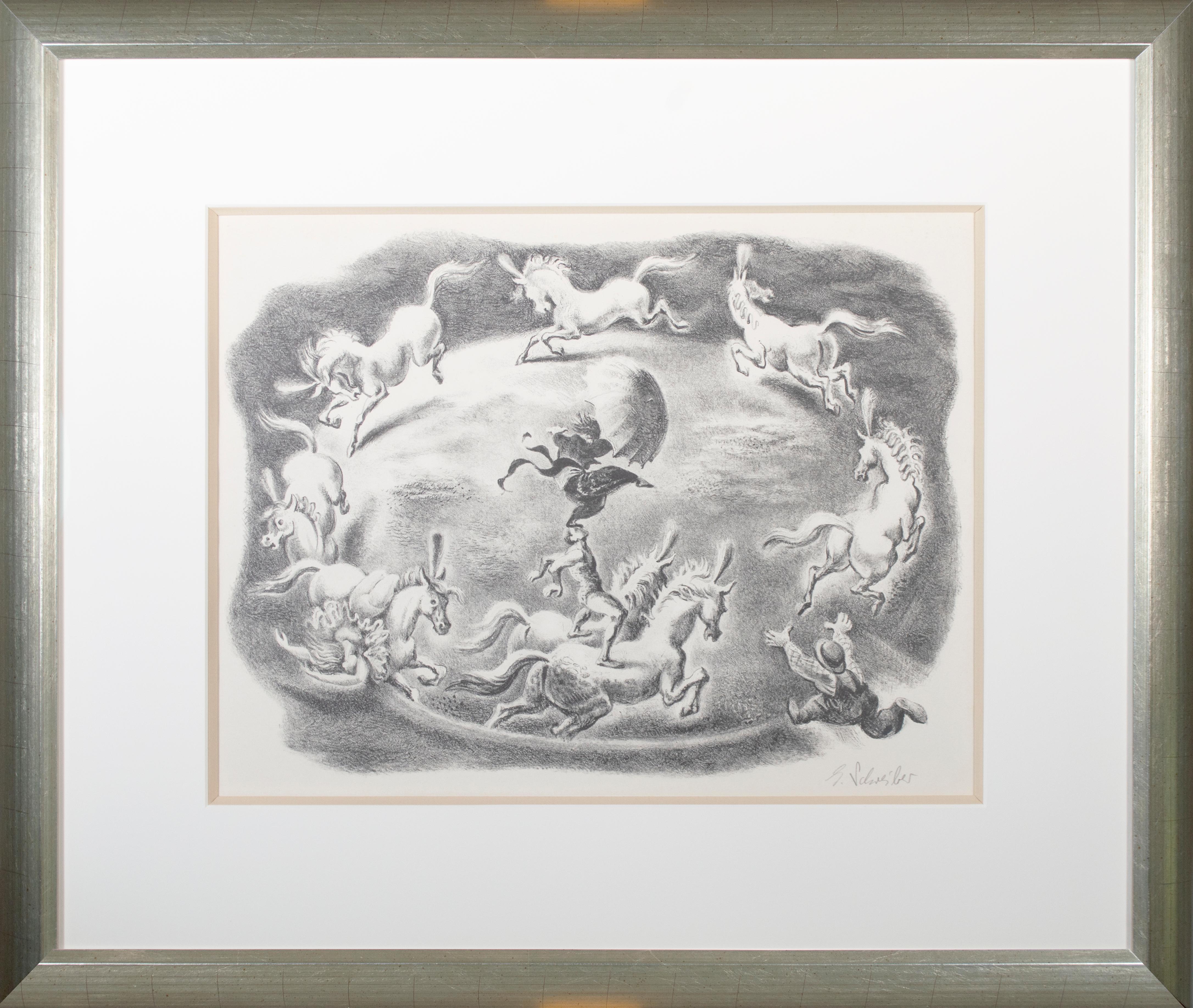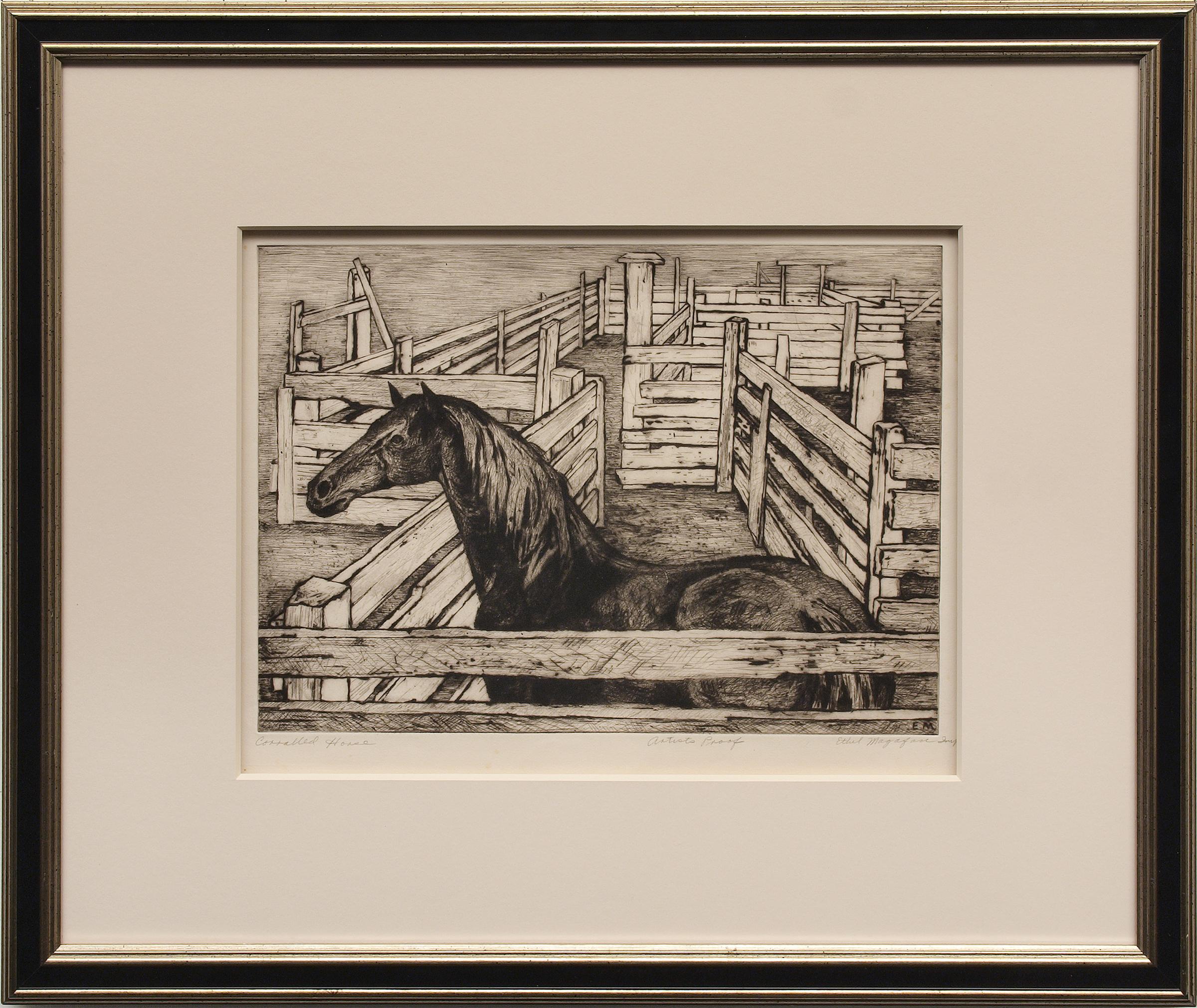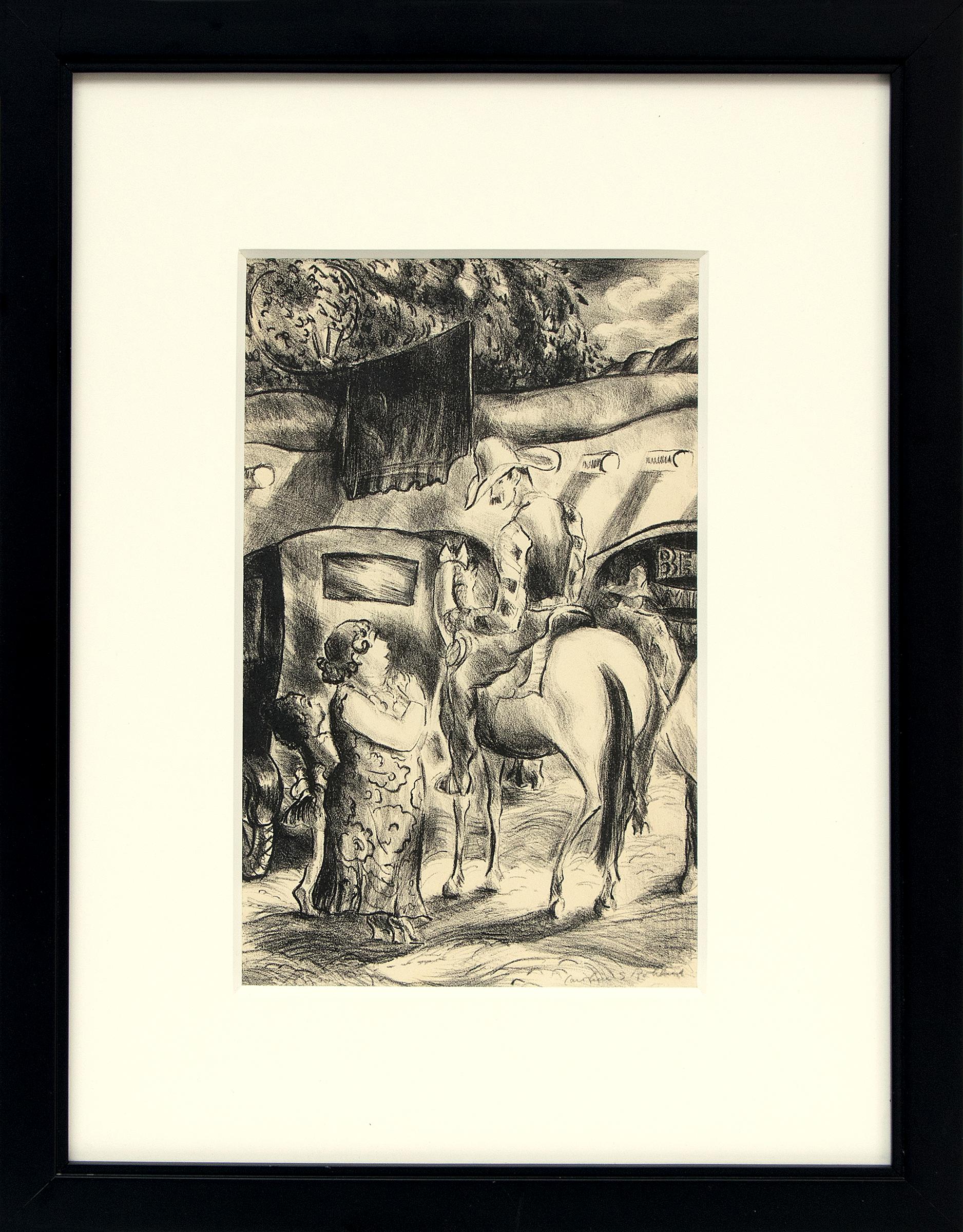Items Similar to Original "The Greatest Show on Earth" 1951 vintage movie poster US 1-sheet
Want more images or videos?
Request additional images or videos from the seller
1 of 7
UnknownOriginal "The Greatest Show on Earth" 1951 vintage movie poster US 1-sheet1951
1951
About the Item
Original “The Greatest Show on Earth” vintage US 1 sheet movie poster.
Cecil B DeMille’s 1951 movie. Archival linen backed in very good condition, ready to frame. Original theater-issued fold marks restored during linen backing. Over 70 years old, 1st printing.
Welcome to the circus. The Greatest Show on Earth starring Betty Hutton, Cornel Wilde, Charlton Heston, James Stewart (Jimmy Stewart), Lawrence Tierney, and Emmett Kelly. Cecil B. DeMille directed the classic film.
This rare authentic movie poster from 1951 features a clown in the foreground; elephant and trapeze artists in the background. Bright and vibrant. Linen-backed.
The Great Show on Earth Awards
Academy Award for Best Picture
Golden Globe Award for Best Motion Picture
Golden Globe Award for Best Director
Academy Award for Best Story
This is an Original Lithograph Vintage Poster; it is not a reproduction.
- Creation Year:1951
- Dimensions:Height: 41 in (104.14 cm)Width: 27 in (68.58 cm)Depth: 0.05 in (1.27 mm)
- Medium:
- Movement & Style:
- Period:
- Condition:Certificate of Authenticity with an embedded image of the artwork. Conservation linen-backed and ready to frame. A condition. Touched up original theater fold marks, touch up staple mark on lower bottom right, very rare original 1st printing.
- Gallery Location:Spokane, WA
- Reference Number:
About the Seller
5.0
Platinum Seller
These expertly vetted sellers are 1stDibs' most experienced sellers and are rated highest by our customers.
Established in 1998
1stDibs seller since 2020
162 sales on 1stDibs
Typical response time: 2 hours
- ShippingRetrieving quote...Ships From: Spokane, WA
- Return PolicyA return for this item may be initiated within 3 days of delivery.
More From This SellerView All
- Original "The Big Show" vintage US 1-sheet movie poster 1961Located in Spokane, WAOriginal "The Big Show", US 1-sheet linen-backed movie poster from 1961. Very fine condition. Professional restoration of original theater fold marks. A - A- condition, ready t...Category
1960s American Modern Animal Prints
MaterialsOffset
- "Arena" First 3 Dimension Western vintage movie poster 1953 US 1-sheetLocated in Spokane, WA“Arena” The First 3 Dimension Western. Original theater issued vintage movie poster - 1953. Professional archival linen backed with the original theater-issued fold marks restored. Ready to frame. Size: 27" x 41.5" Original linen-backed 1953 first 3-D Western movie poster. The FIRST 3-D Dimension Western MGM full-length feature. You live dangerously in MGM's great outdoor romance! Print by Technicolor. Photographed in Technicolor Ansco Color. Gig Young, Jean Hagen, Polly Bergen...Category
1950s American Modern Animal Prints
MaterialsOffset
- Original Watch Out .. Safe Direction NRS vintage gun safety posterLocated in Spokane, WAOriginal “Watch Out .. Point the Muzzle in a SAFE Direction” vintage National Rifle Association of America vintage poster. Printed in 1946 on a thick cardboard stock. Excellent ...Category
1940s American Modern Figurative Prints
MaterialsLithograph
- Original PERU Braniff International Airways vintage travel posterLocated in Spokane, WAOriginal travel poster: Braniff International Airways, Peru Bull. Size 20" x 26" A- condition. This vintage poster is not linen-backed because it is printed on a heavier paper ...Category
1960s American Modern Animal Prints
MaterialsLithograph
- Original "Bring on the SNOW!" vintage poster. SkiingLocated in Spokane, WAOriginal “Bring on the Snow!”. This is a 1973 lithograph printed in Syracuse, N.Y. Archival linen backed in excellent condition, ready to frame. Bright and clean colors, no paper...Category
1970s American Modern Figurative Prints
MaterialsLithograph
- Original "Wonderful Copenhagen" vintage travel posterLocated in Spokane, WAOriginal vintage poster: WONDERFUL COPENHAGEN created by the artist Viggo Vagnby. This antique poster is archival linen backed, in excellent co...Category
1950s American Modern Animal Prints
MaterialsLithograph
You May Also Like
- 'Circular Motion' original lithograph signed by Georges SchreiberBy Georges SchreiberLocated in Milwaukee, WIIn this lithograph, Georges Schreiber focused on the thrill of the circus, taking its circular composition from the central ring. Here, acrobats perform amazing feats of agility on t...Category
1940s American Modern Animal Prints
MaterialsLithograph
- Corralled Horse (Artists Proof), 1940s Framed American Modernist Horse EtchingBy Ethel MagafanLocated in Denver, CO"Corralled Horse", is an etching on paper by western artist Ethel Magafan (1916-1993) of a single dark horse standing outside in a wooden fenced corral. Presented in a custom frame, outer dimensions measure 19 x 23 inches. Image size is 10 x 14 inches. This is marked as an Artist Proof Piece is in very good condition - please contact us for a detailed condition report. Provenance: Estate of Artist, Ethel Magafan Expedited and international shipping is available - please contact us for a quote. About the Artist: Ethel Magafan Born 1916 Died 1993 The daughter of a Greek immigrant father and a Polish immigrant mother who met and married in Chicago, Ethel Magafan, her identical twin sister Jenne and their elder sister Sophie grew up in Colorado to which their father relocated the family in 1919. They initially lived in Colorado Springs where he worked as a waiter at the Antlers Hotel before moving to Denver in 1930 to be head waiter at the Albany Hotel. Two years later during the Great Depression Ethel and Jenne experienced at sixteen the tragic loss of their father who had encouraged their artistic aspirations. He was proud when Ethel, a student at Morey Junior High School, won top prizes in student poster contests sponsored by the Denver Chamber of Commerce and the Denver Post. At East High School in Denver she and Jenne contributed their art talents to the school’s and by their senior year were co-art editors of the Angelus, the 1933 yearbook. At East they studied art with Helen Perry, herself a student of André Lhote in Paris and the Art Institute of Chicago. Her decision to abandon an arts career to teach high school students served as an important example to Ethel and Jenne, who early on had decided to become artists. In a city-wide Denver competition for high school art students Ethel won an eighteenweek art course in 1932-33 to study at the Kirkland School of Art which artist Vance Kirkland had recently established in the Mile High City. Perry encouraged the Magafan twins’ talent, exposing them to the work of Matisse, Picasso and Cézanne and introducing them to local artists and architects like Frank Mechau and Jacques Benedict whom she invited to speak in her high school art classes. She paid the modest tuition for Ethel and Jenne to study composition, color, mural designing and painting at Mechau’s School of Art in downtown Denver in 1933-34. In the summer of 1934 and for a time in 1936 they apprenticed with him at his studio in Redstone, Colorado. When they returned to Denver in 1934 with no family breadwinner to support them, their mother insisted that they have real jobs so they worked as fashion artists in a Denver department store. When Jenne won the Carter Memorial Art Scholarship ($90.00) two years later, she shared it with Ethel so that both of them could enroll in the Broadmoor Art Academy (now the Colorado Springs Fine Arts Center) where they studied with Mechau. When the scholarship money ran out after two months, he hired them as his assistants. Along with Edward (Eduardo) Chavez and Polly Duncan, they helped him with his federal government mural commissions. At the Fine Arts Center Ethel also studied with Boardman Robinson and Peppino Mangravite, who hired her and Jenne in 1939 to assist him in his New York studio with two murals commissioned for the post office in Atlantic City, New Jersey. Like their Denver high school art teacher, Robinson also stressed the need to draw from nature in order to "feel" the mountains, which later become the dominant subject matter of Ethel’s mature work after World War II. Mechau trained her and her sister in the complex process of mural painting while they studied at the Colorado Springs Fine Arts Center, teaching them the compositional techniques of the European Renaissance masters. This also involved library research for historical accuracy, small scale drawing, and Page 2 of 4 the hand-making of paints and other supplies. Ethel recalled that their teacher "was a lovely man but he was a hard worker. He drove us. There was no fooling around." Her apprenticeship with Mechau prepared her to win four national government competitions, beginning at age twenty-two, for large murals in U.S. post offices: Threshing – Auburn, Nebraska (1938), Cotton Pickers – Wynne, Arkansas (1940), Prairie Fire – Madill, Oklahoma (1940), and The Horse Corral – South Denver, Colorado (1942). In preparation for their commissions Ethel and her sister made trips around the country to pending mural locations, driving their beat-up station wagon, dressed in jeans and cowboy boots with art supplies and dogs in tow. She and Jenne combined their talents in the mural, Mountains in Snow, for the Department of Health and Human Services Building in Washington, DC (1942). A year later Ethel executed her own mural, Andrew Jackson at the Battle of New Orleans, January 8, 1814, for the Recorder of Deeds Building, also in Washington, DC. Her first mural commission, Indian Dance, done in 1937 under the Treasury Department Art Project for the Senate Chamber in the United States Capitol, has since disappeared. Ethel and her sister lived and worked in Colorado Springs until 1941 when their residence became determined by the wartime military postings of Jenne’s husband, Edward Chavez. They moved briefly to Los Angeles (1941-42) and then to Cheyenne, Wyoming, while he was stationed at Fort Warren, and then back to Los Angeles for two years in 1943. While in California, Ethel and Jenne executed a floral mural for the Sun Room of the Beverly Hills Hotel and also painted scenes of the ocean which they exhibited at the Raymond and Raymond Galleries in Beverly Hills. While in Los Angeles they met novelist Irving Stone, author of Lust for Life, who told them about Woodstock, as did artists Arnold Blanch and Doris Lee (both of whom previously taught at the Colorado Springs Fine Arts Center school. In summer of 1945 Ethel, her sister and brother-in-law drove their station wagon across the country to Woodstock which became their permanent home. A year later Ethel married artist and musician, Bruce Currie, whom she met in Woodstock. In 1948 with the help of the GI Bill they purchased an old barn there that also housed their individual studios located at opposite ends of the house. The spatial arrangement mirrors the advice she gave her daughter, Jenne, also an artist: "Make sure you end up with a man who respects your work…The worst thing for an artist is to be in competition with her husband." In 1951 Ethel won a Fulbright Scholarship to Greece where she and her husband spent 1951-52. In addition to extensively traveling, sketching and painting the local landscape, she reconnected with her late father’s family in the area of Messinia on the Peloponnese peninsula in southern Greece. At the same time, her sister Jenne accompanied Chavez on his Fulbright Scholarship to Italy where they spent a productive year painting and visiting museums. Shortly after returning home, Jenne’s career was cut tragically short when she died of a cerebral hemorrhage at age thirty-six. It deeply affected Ethel whose own work took on a somber quality for several years conveyed by a darkish palette, as seen in her tempera painting, Aftermath (circa 1952). In the 1940s Ethel and her sister successfully made the important transition from government patronage to careers as independent artists. Ethel became distinguished for her modernist landscapes. Even though Ethel became a permanent Woodstock resident after World War II, from her childhood in Colorado she retained her love of the Rocky Mountains, her "earliest source of my lifelong passion for mountain landscape." She and her husband began returning to Colorado for annual summer camping trips on which they later were joined by their daughter, Jenne. Ethel did many sketches and drawings of places she found which had special meaning for her. They enabled her to recall their vital qualities which she later painted in her Woodstock studio, conveying her feeling about places remembered. She also produced a number of watercolors and prints of the Colorado landscape that constituted a departure from the American Scene style of her earlier paintings. Her postwar creative output collectively belongs to the category of landscape abstractionists as described by author Sheldon Cheney, although to a greater or lesser degree her work references Colorado’s mountainous terrain. She introduced a palette of stronger pastels in her paintings such as two temperas, Evening Mountains from the 1950s and Springtime in the Mountains from the early 1960s. In 1968 she was elected an Academician by the National Academy of Design in New York. Two years later, based on results of her many summer trips to Colorado, the U.S. Department of the Interior invited her to make on-the-spot sketches of the western United States, helping to document the water resources development and conservation efforts by the Department of the Interior. Her sketches were exhibited at the National Gallery in Washington, DC, and then sent on a national tour by the Smithsonian Institution. Similarly, her previous work as a muralist earned her a final commission at age sixty-three for a 12 by 20 foot Civil War image, Grant in the Wilderness, installed in 1979 in the Chancellorsville Visitors Center at the Fredericksburg National Military Park in Virginia. In the 1970s, too, she taught as Artist-in-Residence at Syracuse University and at the University of Georgia in Athens. Her many awards include, among others, the Stacey Scholarship (1947); Tiffany Fellowship (1949); Fulbright Grant (1951-52, in Greece with her husband); Tiffany Fellowship (1949); Benjamin Altman Landscape Prize, National Academy of Design (1955); Medal of Honor, Audubon, Artists (1962); Henry Ward Granger Fund Purchase Award, National Academy of Design (1964); Childe Hassam Fund Purchase Award, American Academy of Arts and Letters (1970); Silver Medal, Audubon Artists (1983); Champion International Corporation Award, Silvermine Guild, New Canaan, Connecticut (1984); John Taylor Award, Woodstock Artists Association, Woodstock, New York (1985); Harrison Cady...Category
1940s American Modern Figurative Prints
MaterialsEtching, Paper
- Bareback Act, Old HippodromeBy Gifford BealLocated in Missouri, MOBareback Act, Old Hippodrome By Gifford Beal (1879-1956) Signed Lower Right Unframed: 6.5" x 9.5" Framed: 17.5" x 20" Gifford Beal, painter, etcher, muralist, and teacher, was born in New York City in 1879. The son of landscape painter William Reynolds Beal, Gifford Beal began studying at William Merritt Chase's Shinnecock School of Art (the first established school of plein air painting in America) at the age of thirteen, when he accompanied his older brother, Reynolds, to summer classes. He remained a pupil of Chase's for ten years also studying with him in New York City at the artist's private studio in the Tenth Street Studio Building. Later at his father's behest, he attended Princeton University from 1896 to 1900 while still continuing his lessons with Chase. Upon graduation from Princeton he took classes at the Art Students' League, studying with impressionist landscape painter Henry Ward Ranger and Boston academic painter Frank Vincent DuMond. He ended up as President of the Art Students League for fourteen years, "a distinction unsurpassed by any other artist." His student days were spent entirely in this country. "Given the opportunity to visit Paris en route to England in 1908, he chose to avoid it" he stated, "I didn't trust myself with the delightful life in ParisIt all sounded so fascinating and easy and loose." His subjects were predominately American, and it has been said stylistically "his art is completely American." Gifford achieved early recognition in the New York Art World. He became an associate member of the National Academy of Design in 1908 and was elected to full status of academician in 1914. He was known for garden parties, circuses, landscapes, streets, coasts, flowers and marines. This diversity in subject matter created "no typical or characteristic style to his work." Beal's style was highly influenced by Chase and Childe Hassam, a long time friend of the Beal family who used to travel "about the countryside with Beal in a car sketching...Category
20th Century American Modern Animal Prints
MaterialsLithograph
- Cowboy on Horseback with Tourists, 1930s Fine Art Print, Regional American SceneBy Caroline Speare RohlandLocated in Denver, COCowboy on Horseback with Tourists is a lithograph circa 1935 by Caroline Speare Rohland. Presented in a custom black frame, outer dimensions measure 17 ⅞ x 13 ⅝ x ⅝ inches. Image sig...Category
Mid-20th Century American Modern Figurative Prints
MaterialsLithograph
- 'The Rabbit' original woodcut engraving by Clarice George LoganBy Clarice George LoganLocated in Milwaukee, WIIn 'The Rabbit,' Wisconsin artist Clarice George Logan presents the viewer with a multi-figural scene: under a wood-frame structure, four children crouch on the ground, gathered around a young woman who presents a rabbit. Under normal circumstances, such an image of children with a bunny would recall childhood storybooks. In this case, however, the image is more ambiguous and suggests the unfortunate economic circumstances many children suffered during the interwar years. Nonetheless, the group could also be interpreted as a nativity play, with the rabbit taking the place of the Christ child, shining light on the children like in a painting by the Italian Renaissance artist Correggio. The careful line-work of the woodblock engraving adds a sense of expressionism to the scene, leaving the figures looking distraught and dirty, though the image nonetheless falls into the Social Realist category that dominated American artists during the Great Depression. This print was published in 1936 as part of the Wisconsin Artists' Calendar for the year 1937, which included 52 original, hand-made prints - one for each week of the year. Clarice George Logan was born in Mayville, New York in 1909 but moved to Wisconsin in 1921. She attended the Milwaukee State Teachers College from 1927 to 1931 where she studied with Robert von...Category
1930s American Modern Figurative Prints
MaterialsWoodcut, Engraving
- Red Damsel (Human looks at small Tinker Bell like figure)By Lois WardLocated in New Orleans, LALois Ward's "Red Damsel" is a color mezzotint created in 1994 in a very small edition of just 10. This impression is #2 of 10. A young human figure in green gazes down on a Tinker B...Category
1990s American Modern Figurative Prints
MaterialsMezzotint
Recently Viewed
View AllMore Ways To Browse
Modern Retro Show
Vintage Posters Us
Vintage Art Show Posters
Vintage Us American Posters
Vintage Sheets
Vintage Movie Posters
Linen Sheet
Clown Prints
Movie Lithograph
Used Linen Sheets
Circus Animals
Vintage Elephant Prints
Vintage Clown Print
Vintage Clown Prints
Movie Theater Art
Movie Poster In Frame
Vintage Linen Sheet
Globe Poster





